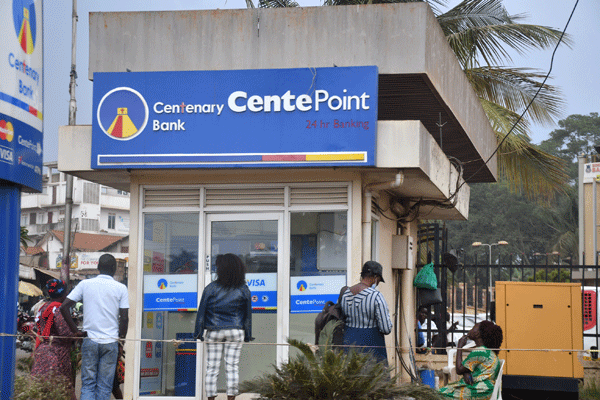Prime
Bank of Uganda: 50 years of regulating Uganda’s economy

Liverpool House - Parliamentary Avenue. The First Bank of Uganda Headquarters 1966 - 1970
What you need to know:
On August 15, 1966, Bank of Uganda was established, ushering in a new regime of currency notes after Uganda abandoned the East African Shilling for the Uganda Shilling. Mark Keith Muhumuza traces how Bank of Uganda took shape, the governors over the years, key milestones and challenges in the last 50 years.
In 1919, Alfred Milner – a liberal statesman – and the then British Secretary of State for Colonies wanted a change in how transactions were done in colonial states of Uganda, Kenya and Tanganyika. The colonialists at the time wanted stronger and better alignment of currencies within East Africa with the British Pound. Milner directed that there be the East Africa Currency Board (EACB) to carry out the role of dealing with multiple currencies circulating in the region at the time.
In 1920, the EACB became operational and started the process of currency management in the region. By 1924, the Shilling was fully operational in the region. Once Kenya, Uganda and Tanzania became independent, the leaders within the region started deliberating on the East African Central Bank. The period after independence was of particular interest as the three countries had started talks on having a single East African federation, which would require a banking system and economy managed by a central bank. It was a suggestion that was embraced by finance ministers in the three countries.
By 1964, the ministers were moving towards the formation of the central bank but the political leadership at the time appeared not to be moving at the same. This was following a failure to secure a political union on one hand and on the other; the countries started adopting more nationalistic policies that were against the spirit of unity. By 1965, Uganda was specifically moving in a different direction.
“In press release of the ministry of finance dated February 1 1965, it was announced that Uganda was to have two new banks, a State Bank which would provide full commercial banking services in competition with the existing commercial banks in the country, and Bank of Uganda (BoU) which was expected to play a major part in meeting the demands of Uganda’s rapidly expanding economy,” Mr Phares Mutibwa, a historian, writes in a book: “The Bank of Uganda (1966 – 2006): A historical perspective.”
This drive was anchored by the then finance minister, Mr Lawrence Kalule Settala, who insisted that Uganda was not turning back. Following the announcement by Uganda, 1965 set the stage to begin the transition of ending the currency union. Timelines were set and on May 16, 1966, the BoU Act was passed.
Under the Ministry of Finance, on August 15, 1966, BoU was born. It was the beginning of an era with Uganda abandoning the East African Shilling for the Uganda Shilling. The issuance of currency and managing of monetary policy were now functions of BoU. Uganda did not have the expertise to fully run the bank so it tapped the resources at the Bank of England. Many of the structures were guided and set up by Ian Lewis, a British National.
Meanwhile, the Governorship would go to Joseph Mubiru, 37, – the first governor of BoU -, on a five-year term marking the beginning of what would be a series of ups and downs at the regulator. During his tenure as the first governor, BoU’s role was aligned to socialist policies of the government at the time. What was critical was the issuance of the new currency, continued support through commercial banks to farmers and regulation of banks.
In 1969, the Banking Act was passed, clearly spelling out the role of BoU in regulating and supervising commercial banks. Prior to that, the regulatory framework was blurred. Mubiru also faced a challenge as President Apollo Milton Obote announced nationalisation of foreign assets in 1970, without consultation with BoU on potential implications. The two fell out but Obote was ousted by Idi Amin in 1971, giving Mubiru a lifeline as governor.
Recovery, liberalisation, and reform
Since the National Resistance Movement (NRM) took over power in 1986, there have been three BoU governors. The NRM had come in with more of socialist ideology but the harsh realities of the time required them to lean toward the Bretton Woods institutes – World Bank and IMF. Suleiman Kiggundu was the man responsible for the implementation of the policies Uganda had agreed to, including the 1987 currency reforms and Structural Adjustment Policies (SAPs). It was also during Kiggundu’s tenure that he began to notice cracks in the financial standing of Uganda Commercial Bank (UCB) and Cooperative Bank. In 1990, Kiggundu’s role was complete and Charles Kikonyogo stepped up for his “second” term. His term was largely a continuation of the Kiggundu era reforms. However, his reign also marked one of Uganda’s darkest times in terms of foreign exchange regulation. The foreign exchange market was largely driven by what is termed as “Kibanda or illegal dollar Market” because of shortages in foreign currency.
It was also a period of several financial reforms in the banking sector that claimed a first victim, Teefe Bank, which had total deposits of Shs351m but with a negative capital position of Shs600m. The bank was closed in 1993. More importantly, was the eventual passing of two important legislations that would forever influence banking regulation in Uganda.
First was the BoU Statute of 1993 that granted the central bank some autonomy on monetary policy management. Additionally, the Financial Institutions Statue 1993 that also gave BoU the mandate to regulate banks and set the rules. BoU was able to carry out better supervision of commercial banks and unfortunately, it caught many napping.
First, BoU saved Nile Bank from collapsing by helping to secure investors who brought some capital. It also saved Sembule Bank depositors from losing money to one the largest borrowers at the time, Sembule Group of Companies. It also secured a buyer for the bank assets. However, the fate of two other banks, International Credit Bank and Greenland Bank in 1999 was closure and seizure of assets in a period termed as the banking crisis. Kikonyogo’s term ended in 2000 and in 2001 Prof Emmanuel Tumusiime Mutebile joined BoU with his first task being the sale of UCB.
The sale of UCB continues to draw mixed reactions and in his book, “Advancing The Ugandan Economy A Personal Account” Dr Ezra Suruma, who the MD UCB up-to 1996, insisted that reforms he had implemented at the time would have led the bank to recover. His criticism is directed towards President Museveni for yielding to pressure from IMF and World Bank to sell.
Mutebile, on the other hand, defended the decision in: “Uganda’s Economic Reforms: Insider Accounts” a book published in 2010.
“There were, however, other motives; one of the factors behind the insolvency of UCB was that for a long time it had been used for political purposes. Yet having intervened in a failed bank, it would create a moral hazard for the Bank of Uganda if it were to hand back to the majority shareholder – the government, in this case – which had made it insolvent,” Mutebile writes.
Reforms such as amendments to the Financial Institutions Act and BoU Act have been made. Importantly, the central bank role in managing inflation could not have been more prominent than in 2011 when a new monetary policy tool, inflationary targeting was brought in. This was largely in response to run-way inflation, which was driven by excessive spending to have President Museveni re-elected in 2011.
Furthermore, supervision has improved and BoU now has tools to project a bank in distress and act accordingly to avoid a run on the bank in order to protect depositors. Global Trust Bank and National Bank of Commerce are the two that were closed for failing to comply with BoU’s requirements. BoU also intervened in taking over management of Tropical Bank during the Libyan crisis and the Imperial Bank more recently until it was sold to Exim Bank of Tanzania. The latest reforms are amendments to the Financial Institutions Act that have ushered in Islamic Banking, Agency Banking, and Banc-assurance. Fifty years on, BoU has survived and now takes pride in the management of a “sound financial system.”
A period of turbulence
When Idi Amin took over after a coup, he started reversing some of the nationalisation policies that Obote had put together. He came with his own, including making amendments to the Participation Act where the government would acquire 49 per cent stake in private foreign banks. The BoU continued to operate during this period even after their proposals on the way forward for the economy were rejected. With the expulsion of the Asians in 1972, the BoU had a greater task of monetary policy management as the economy became unregulated and inflation surged. Amin was attempting to indigenise the economy but by the end of 1979, the extent of damage to the economy was unprecedented. In 1973, Amin demanded a change of currency and this was done.
During Amin’s tenure, there were six different governors. Mubiru had left the bank in 1971 and was replaced by Moses Kiingi whose tenure lasted only until 1973. In 1973, Onegi Obel took over until 1978, before being replaced by Henry Kajura who only lasted between September 1978 and February 1979. The shortest term was for Charles Kikonyogo whose term ran from February to April 1979. These changes were indeed an indicator of the turbulence in the economy at the time, where BoU was mostly playing the role of forex bureau instead of a regulator.
When Amin was ousted in April 1979, the Yusuf Lule regime also ushered in a new governor, Gideon Nkojo, whose term only lasted until 1980. Leo Kibirango would then take over in an era described as one of rehabilitation, reconstruction, and recovery. The trouble, however, was that during the six years to 1986, Kibirango served four different presidents. During this tenure, there were two important reforms Kibirango implemented like the duel foreign exchange system and floating Uganda Shilling. Each leader came with issues to deal with currency design changes.




